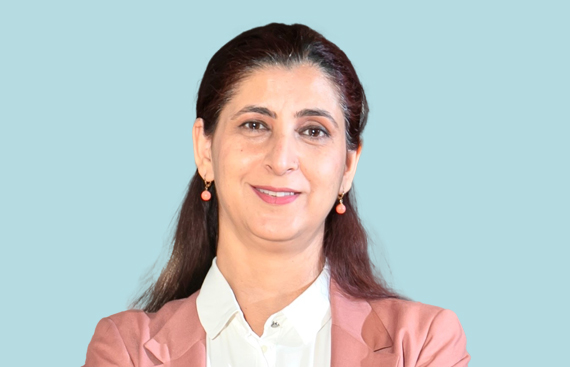A Brief Overview of the Current Medical Equipment Market in India

A specialist in marketing and business development verticals, Chandra came onboard Trivitron Healthcare in 1999 and has since then been instrumental in formulating diverse organizational strategies that have resulted in the company growing towards the pinnacle of success. In a recent interaction with Siliconindia, Chandra Ganjoo, Group CEO, Trivitron Healthcare shared her insights on various aspects pertaining to the current medical devices industry in India. Below are a few key extracts from the exclusive interview
Share your thoughts on the current medical equipment market in India?
India’s ambitious plan to boost its medical device industry’s growth to over 20 percent annually for the next decade reflects a strategic focus on becoming a global player. The government’s ‘Sunrise Sector’ initiative aims to capitalize on factors such as the rising global demand for medical devices, expansion of healthcare schemes like Ayushman Bharat, increased health insurance penetration, and the growth of medical tourism. Streamlining regulations and offering production-linked incentives will further attract foreign and domestic companies, resulting in the creation of medical device parks and encouraging R&D collaborations. This comprehensive approach positions India as an attractive and competitive market for the global medtech sector.
Throw some light on some of the recent tech advancements in the field of medical equipment.
With the recent advancements in AI, we are witnessing a paradigm shift in medical imaging and diagnostic solutions. Computer-aided diagnostics and image recognition algorithms are enhancing accuracy and speed in identifying anomalies. Also, the convergence of next-generation sequencing (NGS) with genomic medicine is unlocking unprecedented insights into an individual’s genetic makeup, paving the way for targeted therapies and personalized medicine. As a result, NGS has emerged as a game-changer in genomics by providing a comprehensive understanding of genetic variations. Additionally, the integration of AI in NGS data analysis is amplifying the speed and accuracy of interpretation, contributing to the evolution of precision medicine.
Furthermore, in vitro diagnostics (IVD) is also riding the wave of innovation, with advancements in point-of-care testing and molecular diagnostics. The portability & efficiency of the intersection of AI and IVD technologies have resulted in easily accessible and timely diagnosis, while simultaneously streamlining data analysis and improving diagnostic precision. Lastly, the emphasis on data privacy, coupled with the incorporation of blockchain is reassuring for patients and healthcare providers alike, as it not only ensures the confidentiality of sensitive medical information, but also contributes to building trust in the healthcare ecosystem.
As an experienced healthcare industry CEO, what are your views on integrating AI and automation within medical devices?
Although incorporating AI and automation into medical devices presents vast opportunities such as personalized treatment plans and enhanced diagnostics, healthcare organizations must ensure that they have all the necessary measures in place to effectively address challenges like data privacy and regulatory complexities. Having clear regulatory guidelines, human factors engineering, rigorous testing, effective risk management planning, and ensuring transparency in their practices are some of the essential strategies that every healthcare organization must follow in order to derive maximum benefits from AI. Additionally, following these practices will also enable the organization to ensure they prioritize safety, efficacy, and ethical considerations while using AI-integrated medical equipment. This approach, coupled with comprehensive training, establishes trust and fosters a transformative and reliable future in healthcare, where innovation aligns with patient well-being and regulatory compliance.
Briefly explain the role of our government in encouraging indigenous manufacturing of medical equipment.
Despite challenges in terms of workforce and infrastructure, India aims to transform its medical device sector into a $50 billion industry by 2030, with special emphasis on self-reliance, accessibility, and affordability of medical devices. The government’s role is essential in facilitating dialogues, allocating funds, and launching initiatives like the National Medical Device Policy. Some of the key strategies to encourage indigenous manufacturing of medical equipment in India include updating regulations, incentivizing research through tax benefits & grants, promoting robust digital infrastructure, mainstreaming public-private partnerships, fostering a conducive ecosystem for innovation, and emphasizing workforce upskilling through industry-academia collaborations.
What does the future hold for the medical equipment market in India?
With advancements in technology, the future of the medical equipment market in India appears incredibly promising. Going forward, we anticipate a surge in innovative and cost-effective solutions that will enhance healthcare accessibility. Also, the government’s focus on healthcare infrastructure and policies supporting the medical device industry further reinforces this positive outlook. Additionally, collaborations between local and international players are likely to drive research and development, resulting in cutting-edge equipment tailored to India’s healthcare needs. As the market evolves, we can expect a boost in employment opportunities and a healthier population, aligning with the nation’s vision for a robust and inclusive healthcare system.
